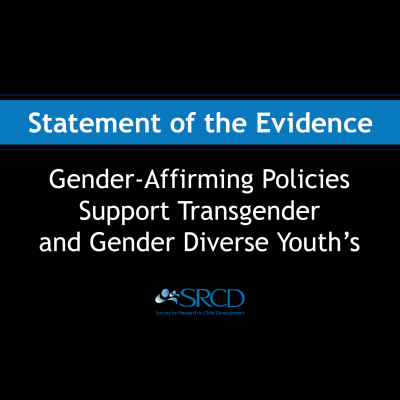Corporal Punishment in U.S. Public Schools
Social Policy Report Brief, Volume 30, Issue 1
Why Does This Matter?
Corporal punishment in public schools is legal in 19 U.S. states, with more than 160,000 children subjected to this form of discipline each year. This first-ever report based on data from 36,942 public schools in 4,460 districts finds that Black children, boys, and children with disabilities receive a disproportionate share of corporal punishment in schools. This report highlights the need to examine a form of punishment that can cause physical harm and the need to consider whether it violates federal laws protecting children in public education from discrimination by race, gender, or disability status.
School corporal punishment can result in serious physical injuries. It has also been linked with lower math and vocabulary achievement scores and lower self efficacy and self-esteem.
Background
- In 1977, the U.S. Supreme Court ruled that school corporal punishment is constitutional, leaving states to decide whether to allow it. Schools are one of the last public institutions where corporal punishment is still legal.
- School corporal punishment typically involves striking a child’s buttocks with a large wooden board or paddle.
- Hitting an animal to the point of injury is a felony in most states, but hitting a child to injury in schools is exempted from child maltreatment laws in most states that allow school corporal punishment.
- Corporal punishment violates the U.N. Convention on the Rights of the Child (CRC); with Somalia’s recent ratification, the United States is the only country that has not ratified the CRC. Most countries (126) have banned corporal punishment from public schools.
- Most Americans (77%) do not support the use of corporal punishment in schools.
What the Research Says
- Some states allow districts to define corporal punishment, while others provide a statewide definition. For example, Texas defines school corporal punishment as “the deliberate infliction of physical pain by hitting, paddling, spanking, slapping, or any other physical force used as a means of discipline.”
- In Alabama, Arkansas, and Mississippi, half of students attend schools that permit the use of corporal punishment. In Mississippi, 7% of all students, and in both Alabama and Arkansas, 4% of students, were corporally punished in 2011-2012 in public schools.
- There are widespread disparities in the administration of corporal punishment by race, gender, and disability status.
- For example, in Alabama and Mississippi, Black children are at least 51% more likely to be corporally punished than White children in over half of districts; they are 500% more likely to be corporally punished in a fifth of districts in those states.
- In eight southern states, boys are five times more likely to receive corporal punishment than girls in at least 20% of districts.
- Children with disabilities are over 50% more likely to be corporally punished than their nondisabled peers in many districts.
- If children perceive that they are being discriminated against, it may result in lower selfesteem, mood, and academic engagement, as well as higher depression, anxiety, and negative behaviors.
- States that have removed corporal punishment from schools have not seen increases in juvenile crime.
Policy Implications
Federal
- The U.S. Supreme Court could reconsider its 1977 Ingraham v. Wright ruling that school corporal punishment is constitutional. While only 2 states banned corporal punishment in schools in 1977, 31 states have banned it since then, suggesting a trend toward elimination and possible reconsideration.
- The Ending Corporal Punishment in Schools Act of 2015 (H.R. 2268) was introduced in committee during the recent Congress but did not advance to the House floor. Policymakers could continue considering legislation on school corporal punishment.
- Federal agencies that protect students’ civil rights should consider whether disparities in corporal punishment based on race, gender, and disability status violate federal law (Title VI of the Civil Rights Act of 1964, Title IX of the Education Amendments of 1972, and the Individuals with Disabilities Education Act).
- The U.S. Department of Education recommends that schools use discipline that is developmentally appropriate and proportional to the misbehavior, and that helps children learn from mistakes. The Department could guide school districts in such methods to reduce corporal punishment.
State
- States could revise statutes or regulations (typically in the education code) to end corporal punishment, and in the meantime, allow parents to refuse its use on their children.
- States that exclude school corporal punishment from definitions of child maltreatment could reexamine definitions. In some states, school corporal punishment is excluded from state definitions of child maltreatment, meaning that behavior considered abuse if inflicted by parents is allowed by teachers or school administrators
This brief summarizes a longer Social Policy Report, "Corporal Punishment in U.S. Public Schools: Prevalence, Disparities in Use, and Status in State and Federal Policy," by Elizabeth T. Gershoff, Associate Professor, University of Texas at Austin and Sarah A. Font, Assistant Professor, Pennsylvania State University.


